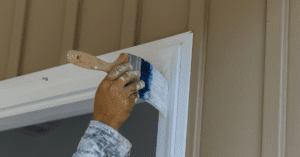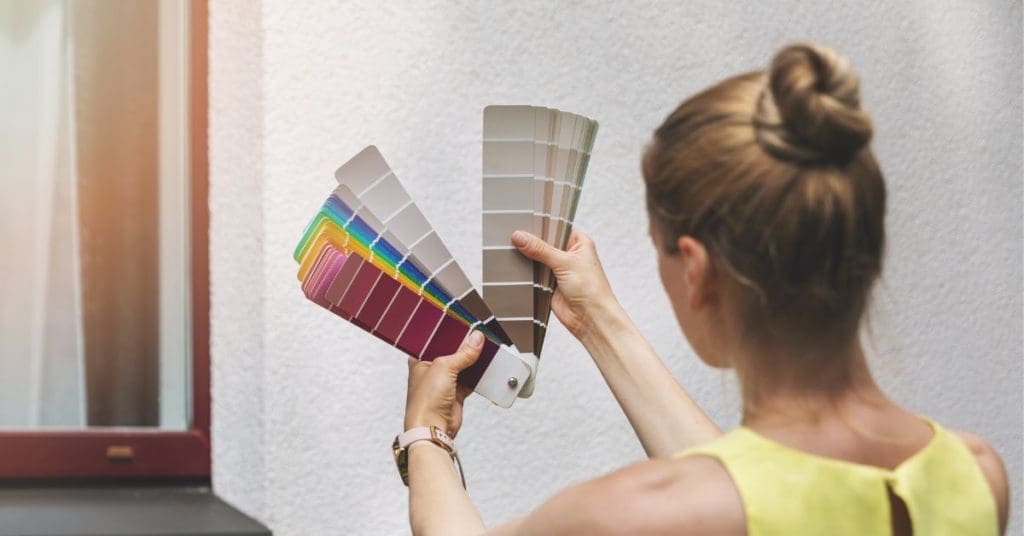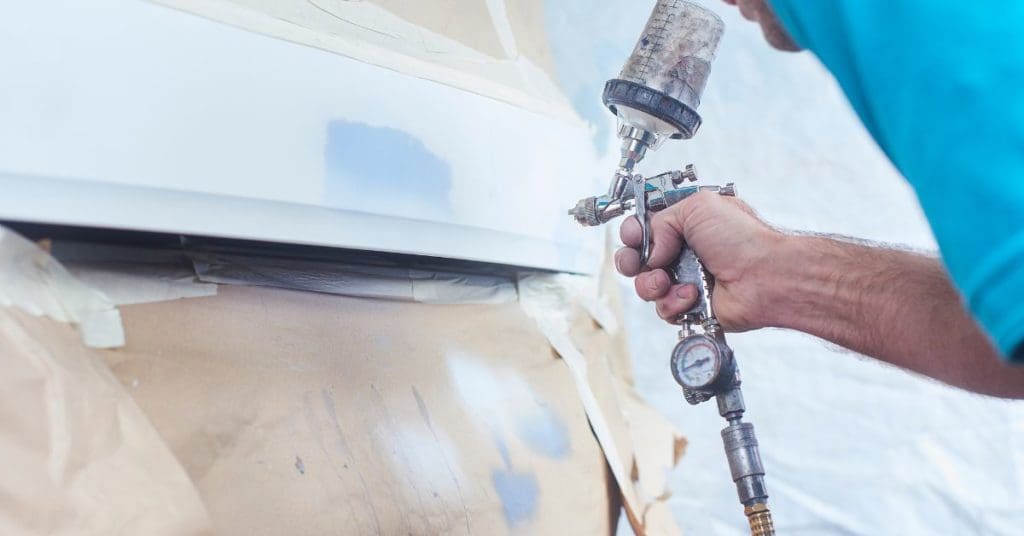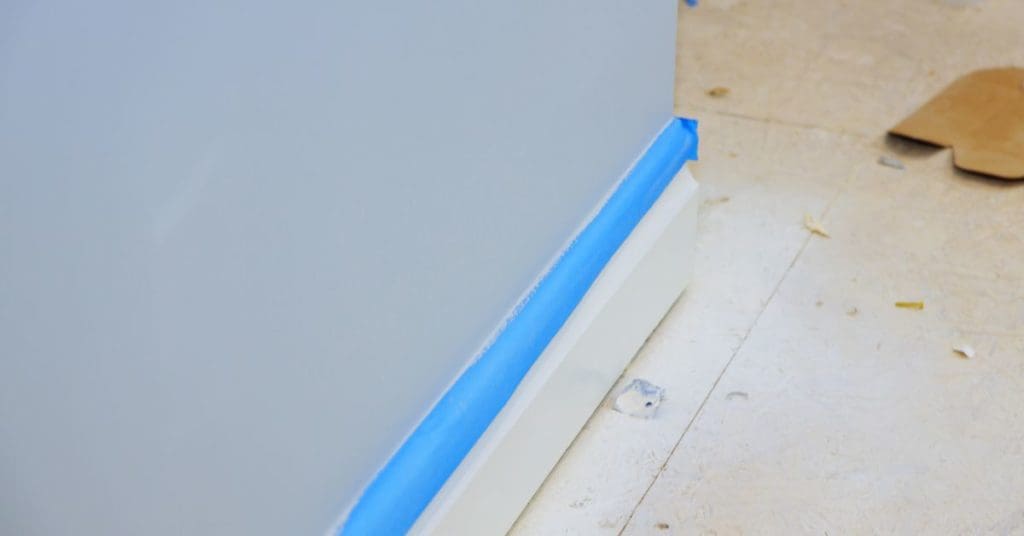Nothing can transform your home like a fresh coat of paint. From covering stains to improving the air quality, there are many advantages to painting your home periodically. However, painting is not as easy as they make it look on a home improvement show.
One of the most critical questions professionals come across is whether you should paint trim or walls first.
Generally speaking, you’d be painting the walls first, followed by your trim. The reason? The walls are painted with rollers during which tiny droplets can end up on the trim. And you would have to go back to the already painted surface and cover up and paint splatter.
On the other hand, professionals like our Burnaby painters prefer painting trim first since it is easier to tape the trim than the walls. However, the answer is not as simple. It primarily comes down to personal preference.
This article discusses the factors affecting the question walls or trim first, the pros and cons, and finally, the steps to paint the trim.
Should Walls or Trim be Painted First?
Walls and trims are the two major parts you need to tackle when painting the interiors. The challenge you would face here is the apparent difference in surfaces, hence painted differently. The walls being broad and flat, are painted with a roller. The trim, on the other hand, is painted with a brush. Finally, and most importantly, these surfaces receive different colors and finishes.
The most obvious question is: Should walls or trim be painted first?
There’s no right way when it comes to painting walls and trims. Walls seem to be the most obvious choice since it covers a large area and is a straightforward process. But that’s often not the case.
Our Surrey painters who have years of interior painting experience often suggest painting the trim first. However, painting trim is a painstaking process that takes some amount of skill. Trims are generally painted with a high gloss finish, and any paint splatters or strokes on the walls can show through the matte finishing.
When Should You Paint the Walls First?
Painting the walls first is easier, especially if you are a DIYer or a beginner. This allows them to make do with messy painting without the work itself looking shoddy, which is not the case with a trim.
However, this is mainly a personal choice. Here are some reasons why you should paint your walls first.
When There’s No Spraying
When no spraying is involved, it is easier to cut in the trim than in the wall. Again, this has to do with the angle of the brush and the accuracy. When you cut the baseboard, you are looking down at the top, giving you a better angle and, hence, a more accurate line. But if you are to cut in a wall, you’d be lying down, which can be somewhat awkward.
Learn more about other painting techniques and when to use them in our article on ‘What Is Epoxy Coating Used For?‘
When You Have Someone to Help You
Painting is tedious; however you try to paint the walls, it will tire you out. So, if someone’s offering their help, accept their generosity. Lay down the drop cloths and have a painting party with your friends and family. However, do not let anyone do the trim but you.
Trim is a detail-oriented, precise work. However, if poorly painted, it can leave permanent brush marks. So let your friends and family help paint the walls, and focus on painting the trim yourself.

When You Are Not Sure About Wall Colour
With the walls occupying a larger surface area, it has a greater impact than the trim. So, it’s always the wall color that everyone notices first.
So, if you are still not committed to the wall color, don’t paint the trim first. Sometimes you may be unable to perceive how a shade looks until it is painted on a wall. Once satisfied with the wall color, you can paint your trim in a complementary color. That way, you are not restricted by the wall color and do not have to repaint the trim.

When You Want a Quick Work
Walls occupy the vast majority of the painting surface in any room. And they are easy to work on when compared to a trim. So, painting walls first will give you an idea of what the room looks like, and you will have visible results soon enough.
Even though trim plays a good part in the look of a room, it will not give any striking results like that of a wall. However, such a dramatic change can give you an energy boost to complete the project.
When Should You Paint the Trim First?
Professionals swear by painting trim first, mostly to get the tedious work out of the way. And in part, it is about the order of things that work out for them. However, there are circumstances when trims should be a priority. Here are a few situations that make painting trims first necessary.
When You are Spraying
One of the disadvantages of spraying is overspray. And that is one of the main reasons you would be painting the trim first. Most professionals prefer spray painting the trim (rather than a brush or roller) for a smoother finish. In addition, it prevents the appearance of orange peels and brush lines.
The best part is you can cut in easily better than a roller, even a brush. This is because you tend to tape to protect other surfaces from over spraying, resulting in a clean line.
To understand when not to use certain painting methods, have a look at our article on ‘When Should You Not Use Epoxy?‘

When the Room is Still Under Construction
You can always get started on the trim if construction is nowhere near done or the room receives work traffic. It gives you something to do while you wait for the work to finish.
However, there’s one condition: you do not have any large furniture being moved in and out of the room. This is because it could hit the trim and mess up the paintwork. So while it leaves the walls for the last, you can rest easy knowing that the more challenging part is complete.
When You are Taping
Many DIYers, if not professionals, prefer taping off areas to prevent paint splashes or errant brush marks. In saying that, trim is easier to tape off due to its smooth sharp edges rather than walls, especially if they are textured.

When You are Cutting In
As mentioned earlier, trim is easier to tape off and cut in. However, if you prefer cutting freehand, you can get a neat edge by spreading the brush. Then, just use the edge to cut in a clean line along the trim.
Tips for Painting Interior Walls and Trim
Freshly painted walls give an elegant look to any space. However, the whole process can be overwhelming for any DIYer. Here are some tips that our Coquitlam painters have to offer:
These simple tips help you work efficiently and avoid costly, time-consuming mistakes.
- Paint the ceilings before painting the walls.
- Start from the top of the walls or trim and work on your way down. This helps prevent drips.
- Use a roller to paint the walls and a brush to cut in and trim. Rollers work the best for big, open surfaces.
- Choose a good-quality painter’s tape. Unfortunately, paints easily bleed through cheap painter’s tape, leaving you with a mess difficult to deal with.
- Work with 1ft -3 ft sections of painter’s tape. This makes the taping job easier and more precise.
- Allow the paint to dry completely before removing the tape. Then, cut the painted edge with a razor knife before releasing it for clean removal.
- Tuck the tape under the trim and over the carpet when taping off. Next, add a second row of tape 1 1/2 inches wide, bringing the area covered by tape to 2-3 inches. A wide painters’ tape helps to line up the drop clothes better.
- If possible, add rosin paper (36 inches wide) along the edge of the room. That way, you need not drag the drop cloth everywhere you go.
Best Paint for Trim
Trims are generally made of wood. However, it also comes in synthetic materials like PVC, polystyrene, and polyurethane. While it is not necessary to paint synthetic materials, homeowners prefer painting to maintain a uniform look.
Trim being wood works well with oil-based paints and acrylic-latex. Oil-based paints have a superior appearance with a high-glossy finish. The glossy finish makes it stand out and prevents dust and debris from settling in the crevices.
On the downside, it has a slow drying time. Acrylic latex, on the other hand, dries quickly but doesn’t have that glossy look. It also adheres to polyurethane without requiring prep and priming.
Explore other types of paint suitable for different parts of your home in our article ‘The Different Types of Interior Paint‘
Conclusion
Knowing the answer to the question “walls or trim first” is the first step in painting a room. While DIYers prefer painting walls, professionals swear by trims. Either way, it is primarily personal preference and comfort.
In most cases, the order of painting doesn’t really matter as long you are patient and precise in the process. Remember painting a room can be time-consuming, so do not try to rush the process and get it done quickly. To understand more about the timelines associated with painting projects, read our article ‘How Long Should You Wait Before Sleeping in the Room After Painting?‘
Ready to transform your home with a new coat of paint but still unsure about the ‘walls or trim first’ debate? No worries! Our expert painters in various cities are here to help. Whether you’re in Maple Ridge painters, Langley painters, Richmond painters, New Westminster painters, West Vancouver painters, North Vancouver painters, Port Coquitlam painters, Coquitlam painters, Port Moody painters, Surrey painters, Burnaby painters, or Vancouver painters, we have dedicated teams ready to assist you. Contact our painters near you today for professional advice and a seamless painting experience. We guarantee an excellent job that leaves your home looking fresh and vibrant!

